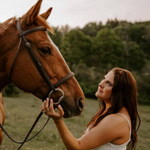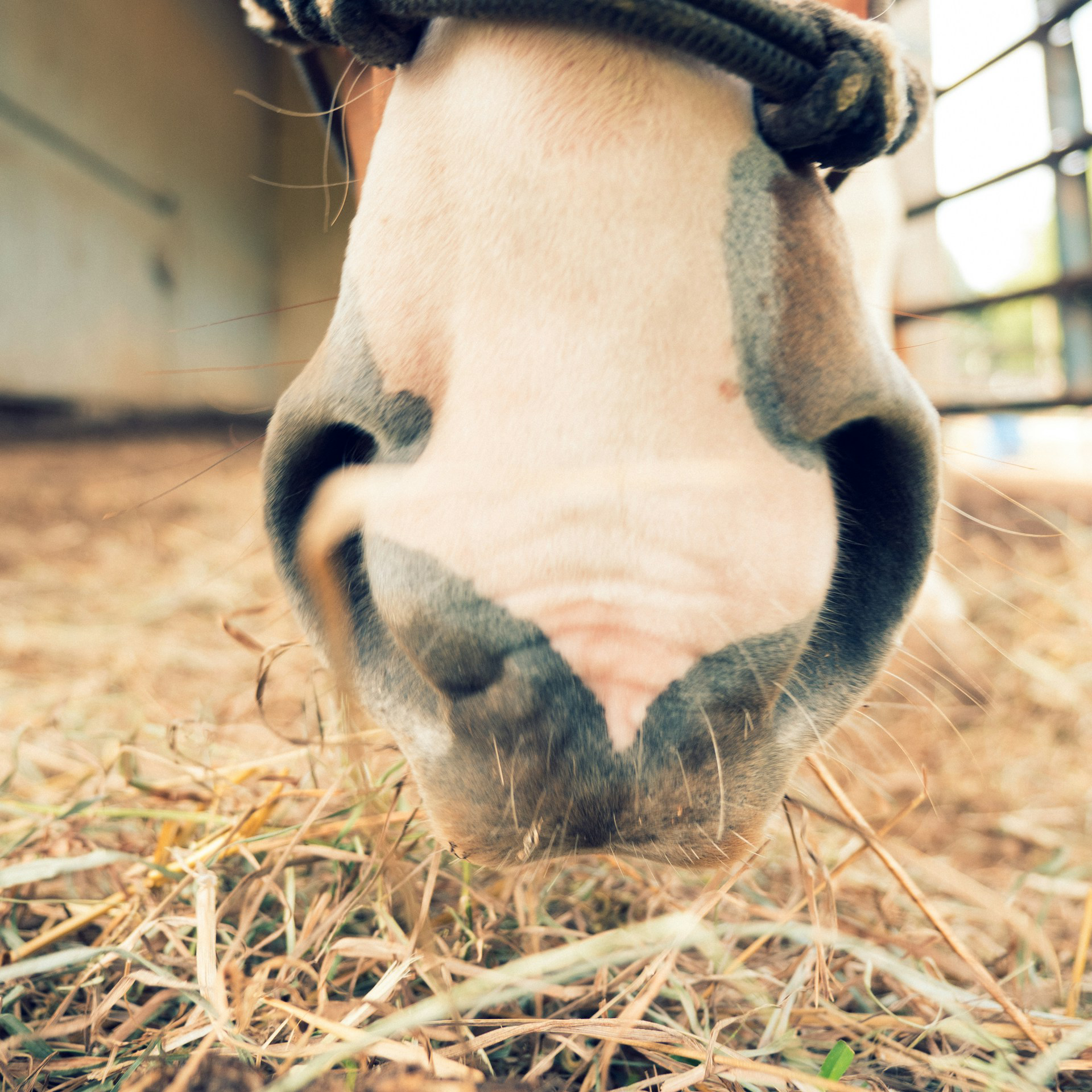The equine digestive system has a direct impact on the horse’s overall health.
That’s why when a horse is not fed in a way that aligns with their natural digestive system, ulcers or colic may occur.
By understanding how the horse digestive system works, it can help us keep them healthier, fed correctly, and in turn, feeling their best.
How the Horse Digestive System Works
A horses’ digestive system is both unique and complex.
When compared to other herbivores, horses have a much different digestive anatomy.
Cows, for example, are ruminants, otherwise known as foregut fermenters. Foregut fermenters have a pre-gastric fermentation chamber in their digestive system. They break down food particles mainly through regurgitation and then re-chewing.
Horses, on the other hand, are classified as hindgut fermenters. This means that most of the fibrous forage material, such as hay and grass, is digested in the hind regions of their digestive tracts.
After a horse eats, feed travels through a series of digestive efforts, starting in the mouth.
When a horse chews its food, also called masticating, it reduces the forage or grain to a smaller size. Their saliva, which contains bicarbonate and enzymes, begins to break down carbohydrates and helps buffer their highly acidic stomach.
Feed then travels through the esophagus, a strong sphincter muscle, which can be 50 – 80 inches long. The esophagus of a horse is much different than a foregut fermenter because food can enter the stomach through the esophagus, but not exit, which means that horses cannot vomit.
Next, feed reaches the horse’s surprisingly small stomach. The stomach is relatively small because horses are grazing animals designed to eat small amounts throughout the day.
In the stomach, hydrochloric acid and enzymes help to eliminate harmful bacteria and assist with breaking down feed. It also secretes pepsin, which is designed to specifically break down protein into smaller peptides and amino acids.
Feed usually only spends about 30 to 45 minutes in the stomach. After leaving the stomach, the feed travels to the small intestine, where the majority of the digestion and nutrient absorption takes place.
In fact, the small intestine makes up about 28% of a horse’s total digestive tract and is about 50 to 70 feet long. Enzymes that are primarily secreted from the pancreas into the small intestine break down fats, starches, and proteins for absorption.
Next, the feed travels from the small intestine to the hindgut—the largest portion of the horse’s digestive tract. The hindgut consists of a horse’s cecum, colon, and rectum.
The cecum is a muscular vat that holds and ferments the undigested feed, which takes at least 7 hours.
Here, the fibrous material in a horse’s diet is fully broken down through fermentation by the population of microbes living in the hindgut. Any starches that have passed through the stomach and small intestine are finished being broken down here as well, although this is not the ideal location for starch digestion.
The goal with feeding horses should be to promote starch digestion in the small intestine and forage digestion in the large intestine.
Through the process of forage fermentation, microbes produce short-chain fatty acids, which are then absorbed and used as an energy source. Methane, Vitamin K, B-vitamins, and some amino acids are produced during this digestive process as well.
During the fermentation stage of the digestive process, a horse’s microbiome produces thousands of beneficial metabolites and compounds (yes, thousands!), which are natural postbiotics.
Once the mostly digested feed leaves the cecum, it enters the large colon—the largest compartment in a horse’s digestive tract.
Microbial digestion is ongoing here, and the horse continues to absorb nutrients during this process.
The digesta is then passed into the small colon, whose role is to absorb any remaining water and form fecal balls.
After fecal ball formation in the small colon, the digesta is then passed through the rectum.
In total, it takes between 36 – 72 hours from the time food enters a horse’s mouth to the time it passes through the rectum.
How to Feed a Horse the Right Way
Because a horse’s digestive system is so distinctive, it’s important to feed horses in a way that naturally works best for their gut to keep them in optimal health.
One of the most important things to keep in mind is that the horse’s digestive system was designed to process small meals throughout the day (think: grazing). In fact, because horses were designed to graze on forage all day long, their stomach secretes hydrochloric acid 24/7, even if they are being fed only two meals a day.
When we feed horses only two large meals per day (a common domestic scenario), we end up with long periods of time in which the horse has an empty stomach. This leaves them vulnerable to digestive issues, such as gastric ulcers.
6 Practical Tips for Feeding Horses Safely
- Provide frequent access to forage. Free-choice hay or pasture, dependent on your horse’s weight and metabolic status, is ideal. If free-choice forage is not an option, consider a slow feed hay net or hay bag to help forage last longer during the day, in between feeding times. This will mimic the horse’s natural grazing process, i.e. how their digestive system was designed to feed.
- Always feed hay before grain, and delay feeding grain until the horse has a chance to consume hay. When given the choice, we all know horses will choose eating grain before hay! If a horse consumes grain then hay, the hay will push the grain through their digestive tract too quickly. This causes it to end up in the large intestine where fermentation can be detrimental to their health. Additionally, grain can be quite irritating to the stomach if there is no forage to buffer the hydrochloric acid.
- For concentrates like grain, the general rule is to never feed more than 0.5% of the horse’s body weight during any one meal. This is because the horse's stomach can only hold about a maximum of 0.5% of their body weight at a time.
- Be vigilant with checking your feed sources for any signs of trouble. Since horses are not able to vomit, if a horse eats something they shouldn’t, like moldy feed, blister beetles, or too much feed, they cannot regurgitate it. This can lead to serious health issues.
- Horses thrive on consistency. Avoid inconsistent feeding programs and abrupt changes in feed, which upset the sensitive microbial population in the cecum/ Make any dietary changes slowly over a period of 10-14 days to decrease risk of colic.
- Feed pre, pro-, and postbiotics to help maintain healthy gut microbes through any of life’s common stressors and changes.
Supplementing to Support Equine GI Health
The Four Sixes Complete Gut Protection supplement is a great way to help ensure your horse is getting the ideal balance of prebiotics, probiotics, and postbiotics for optimum gut health.
This is especially important for horses that are traveling, under stress, and attending events to keep their microbiome healthy, and all the components of their GI tract supported and protected.
Complete Gut Protection contains prebiotics, probiotics, postbiotics, and L-glutamine to target every major component of the digestive system, from the stomach to the hindgut.
Even better, Complete Gut Protection is picky-eater approved! This formula is a concentrated serving of delicious-smelling powder that has no added sugar, yet horses love it.
Read More:


